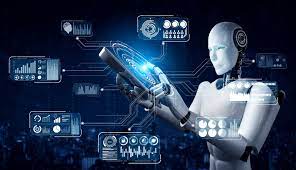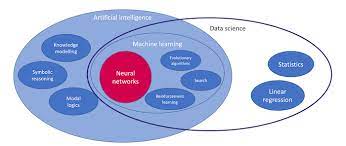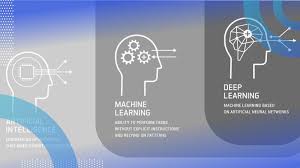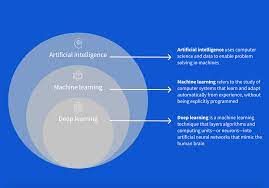Understanding AI Programming: A Gateway to the Future
The world of technology is rapidly evolving, and at the forefront of this evolution is Artificial Intelligence (AI). AI programming has become a crucial component in developing intelligent systems that can perform tasks traditionally requiring human intelligence. From self-driving cars to virtual assistants, AI is transforming industries and reshaping how we interact with technology.
What is AI Programming?
AI programming involves creating algorithms and models that enable machines to learn from data and make decisions. It combines principles from computer science, mathematics, and cognitive psychology to develop systems capable of mimicking human behaviour. The goal is to create machines that can think, learn, and adapt autonomously.
Key Components of AI Programming
- Machine Learning: A subset of AI focused on developing algorithms that allow computers to learn from data. Techniques such as supervised learning, unsupervised learning, and reinforcement learning are commonly used.
- Neural Networks: Inspired by the human brain, neural networks are used in deep learning to process complex patterns in data. They consist of layers of interconnected nodes that simulate neurons.
- Natural Language Processing (NLP): This area enables machines to understand and interpret human language. NLP is crucial for applications like chatbots and language translation services.
- Computer Vision: This field allows machines to interpret visual information from the world. It is widely used in facial recognition, autonomous vehicles, and medical imaging.
The Role of Programming Languages in AI
A variety of programming languages are employed in AI development, each offering unique benefits:
- Python: Known for its simplicity and extensive libraries such as TensorFlow and PyTorch, Python is the most popular language for AI programming.
- R: Favoured for statistical analysis and data visualisation, R is often used in machine learning projects.
- LISP: One of the oldest languages used for AI development due to its excellent support for symbolic reasoning.
- Java: Its portability makes Java a strong choice for large-scale enterprise-level applications.
The Impact of AI Programming on Industries
The influence of AI programming spans across various sectors:
- Healthcare: AI aids in diagnostics, personalised medicine, and predictive analytics to improve patient outcomes.
- Finance: Automated trading systems and fraud detection algorithms are transforming financial services.
- Agriculture: Precision farming techniques use AI for crop monitoring and yield prediction.
- E-commerce: Personalised recommendations enhance customer experiences while optimising inventory management through predictive analytics.
The Future of AI Programming
The potential applications for AI are virtually limitless. As technology continues to advance, so will the capabilities of intelligent systems. Ethical considerations will play a significant role in shaping how these technologies are developed and deployed responsibly.
The demand for skilled professionals in AI programming continues to grow as businesses seek innovative ways to leverage this transformative technology. By understanding its fundamentals today, individuals can prepare themselves for a future where artificial intelligence plays an integral role in everyday life.
The journey into the realm of artificial intelligence promises exciting opportunities—and challenges—that will define our technological landscape for years to come.
8 Essential Tips for Mastering AI Programming
- Understand the basics of machine learning algorithms
- Use libraries and frameworks like TensorFlow or PyTorch
- Collect and preprocess high-quality data for training models
- Regularly update and fine-tune your AI models
- Consider ethical implications when developing AI applications
- Document your code and experiments for reproducibility
- Stay updated with the latest research in AI programming
- Collaborate with other AI programmers to learn from each other
Understand the basics of machine learning algorithms
Understanding the basics of machine learning algorithms is essential for anyone venturing into AI programming. These algorithms form the backbone of AI systems, enabling machines to learn from data and make informed decisions. By grasping fundamental concepts such as supervised learning, unsupervised learning, and reinforcement learning, one can develop a solid foundation in how machines process information and adapt over time. Familiarity with popular algorithms like decision trees, support vector machines, and neural networks will not only enhance one’s ability to implement AI solutions but also provide insight into selecting the right approach for different challenges. This foundational knowledge is crucial for building more complex models and advancing in the field of artificial intelligence.
Use libraries and frameworks like TensorFlow or PyTorch
Leveraging libraries and frameworks such as TensorFlow and PyTorch is essential in AI programming, as they significantly streamline the development process. These tools provide pre-built components and functions that simplify complex tasks like building neural networks, performing data manipulation, and optimising models. TensorFlow, developed by Google, is renowned for its scalability and is widely used for both research and production environments. PyTorch, favoured by researchers for its flexibility and dynamic computation graph, allows developers to experiment more easily with novel architectures. By using these robust libraries, programmers can focus on refining algorithms and improving model accuracy without getting bogged down in the intricacies of underlying computations. This not only accelerates development but also enhances the reliability of AI applications across various domains.
Collect and preprocess high-quality data for training models
Collecting and preprocessing high-quality data is a fundamental step in AI programming, as it directly influences the performance and accuracy of machine learning models. High-quality data ensures that the models can learn effectively, capturing the nuances and patterns necessary for accurate predictions. The process begins with gathering relevant and diverse datasets that reflect the problem domain accurately. Preprocessing involves cleaning the data to remove noise and inconsistencies, handling missing values, and transforming it into a suitable format for model training. Techniques such as normalisation, standardisation, and feature extraction are often employed to enhance data quality further. By investing time in these preparatory steps, developers can significantly improve model robustness and reliability, ultimately leading to better decision-making capabilities in AI systems.
Regularly update and fine-tune your AI models
Regularly updating and fine-tuning AI models is essential for maintaining their accuracy and effectiveness over time. As new data becomes available, models need to be retrained to ensure they continue to perform well in dynamic environments. This process helps in capturing trends, adapting to changes, and correcting any biases or inaccuracies that may have developed since the model’s initial deployment. Moreover, fine-tuning allows for incremental improvements by adjusting parameters and algorithms based on recent performance metrics. By keeping AI models up-to-date, developers can ensure that these systems remain relevant and reliable, ultimately leading to better decision-making and enhanced outcomes across various applications.
Consider ethical implications when developing AI applications
When developing AI applications, it is crucial to consider their ethical implications. As AI systems increasingly influence decision-making processes across various sectors, including healthcare, finance, and law enforcement, the potential for unintended consequences grows. Developers must ensure that these systems are designed with fairness, transparency, and accountability in mind to prevent biases and discrimination. Moreover, safeguarding user privacy and data security is paramount to maintaining public trust. By proactively addressing ethical concerns during the development phase, developers can create AI applications that not only enhance efficiency and innovation but also uphold societal values and protect individual rights.
Document your code and experiments for reproducibility
In the realm of AI programming, documenting code and experiments is essential for ensuring reproducibility and collaboration. Clear documentation allows other developers, as well as your future self, to understand the logic and methodology behind your work. This is particularly important in AI, where models can be complex and results need to be consistently replicated. By meticulously recording details such as data sources, parameter settings, model architectures, and the reasoning behind specific choices, you create a comprehensive reference that can facilitate debugging, enhance transparency, and accelerate progress in collaborative projects. Ultimately, well-documented code not only aids in maintaining the integrity of experiments but also contributes to more robust and reliable AI systems.
Stay updated with the latest research in AI programming
Staying updated with the latest research in AI programming is essential for anyone involved in the field, as it is one of the most rapidly evolving areas of technology. By keeping abreast of new developments, programmers can leverage cutting-edge techniques and methodologies to enhance their projects and stay competitive. This involves regularly reading academic journals, attending conferences, and participating in online forums where researchers and practitioners share their findings. Understanding the latest advancements not only helps in implementing more efficient algorithms but also fosters innovation by providing fresh insights into emerging trends and technologies. Ultimately, staying informed about current research enables developers to anticipate future challenges and opportunities within AI programming.
Collaborate with other AI programmers to learn from each other
Collaboration with fellow AI programmers is an invaluable strategy for enhancing one’s skills and understanding in the field. By working alongside others, individuals can exchange knowledge, share diverse perspectives, and tackle complex problems more effectively. Collaborative environments foster innovation as team members bring unique insights and expertise to the table, often leading to creative solutions that might not emerge in isolation. Additionally, collaboration provides opportunities for mentorship and peer learning, allowing programmers to stay abreast of the latest advancements and best practices in AI. Engaging with a community of like-minded professionals not only accelerates personal growth but also contributes to the collective progress of AI technology.






